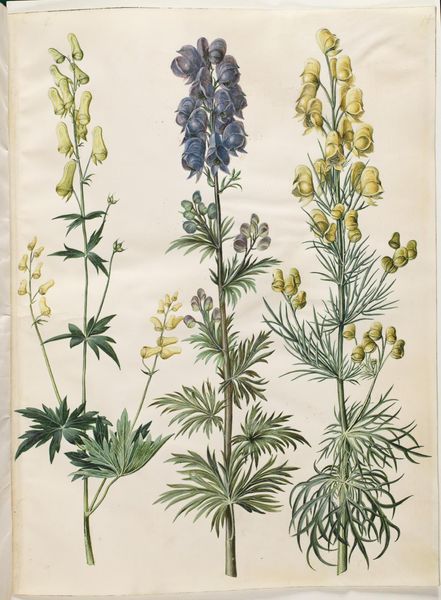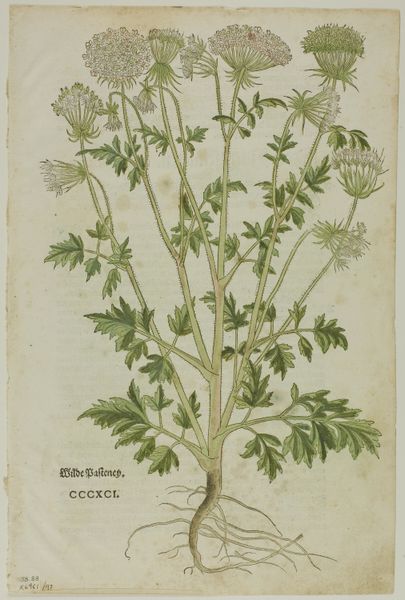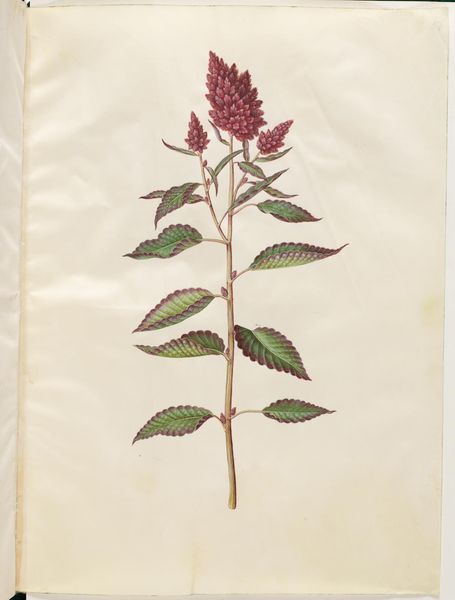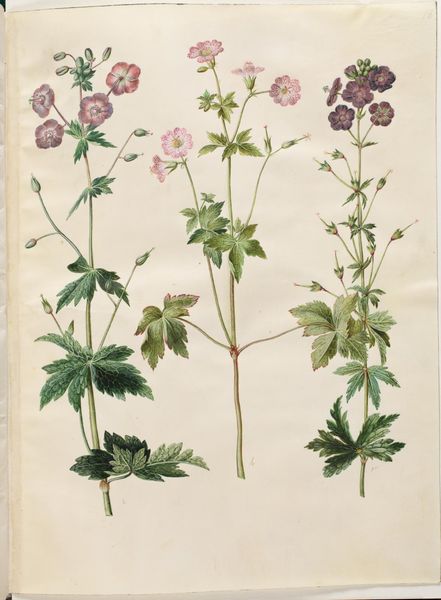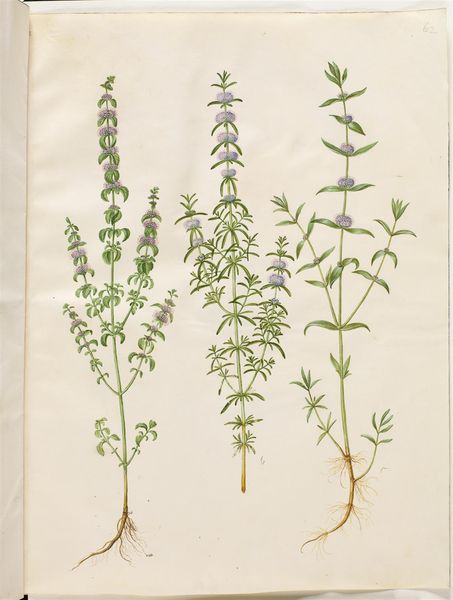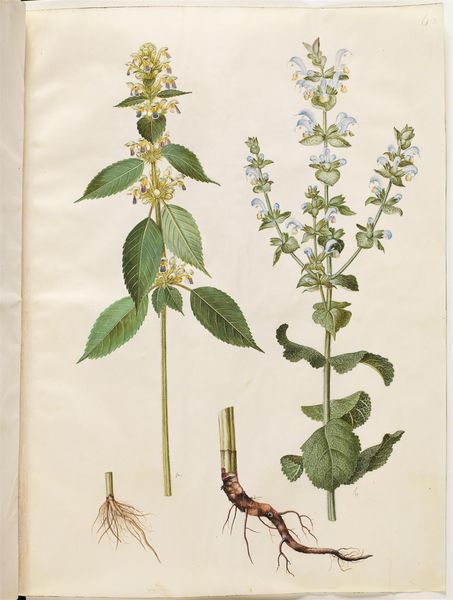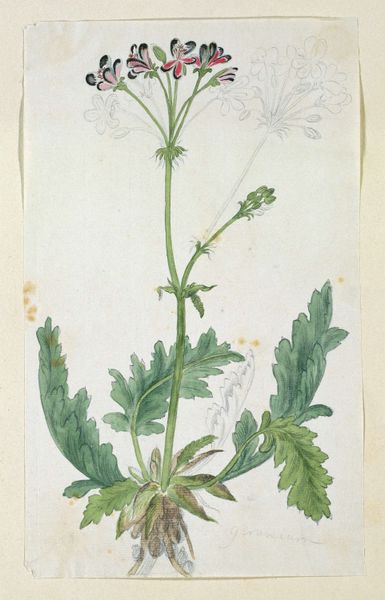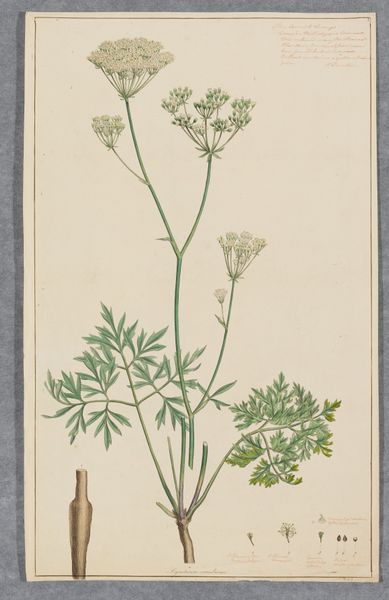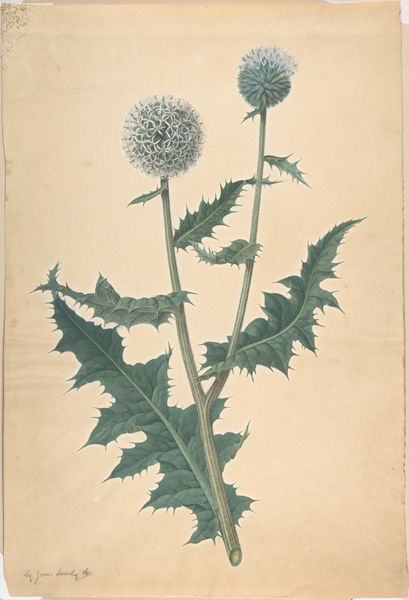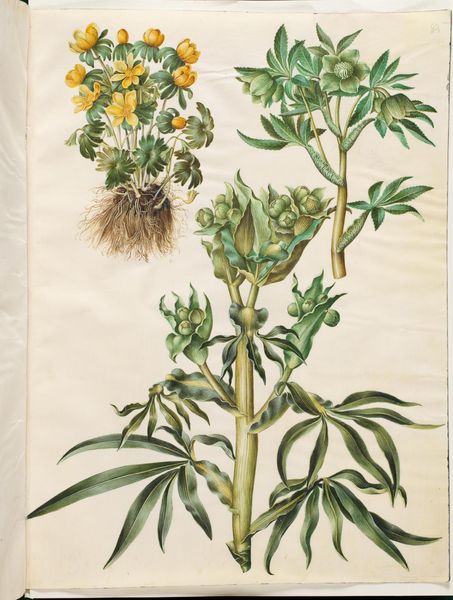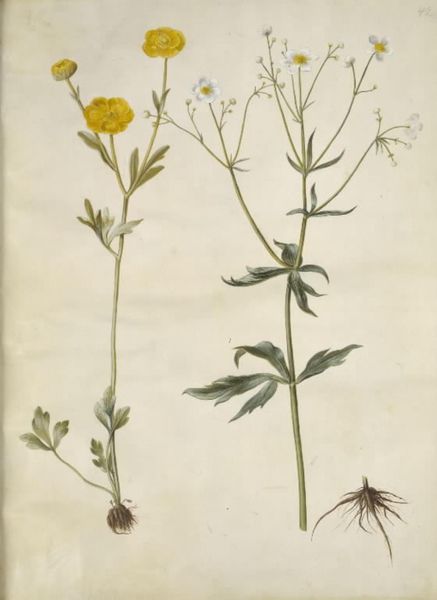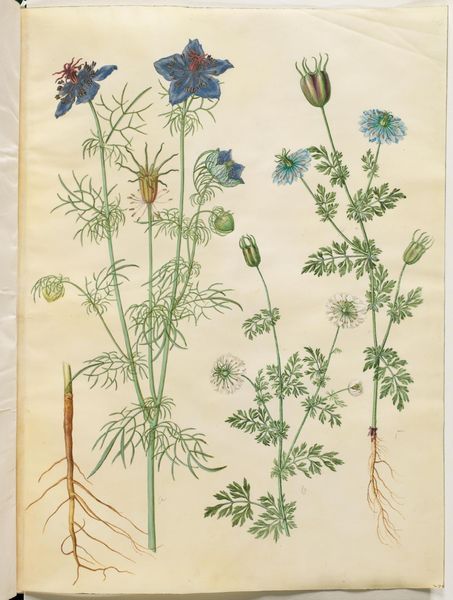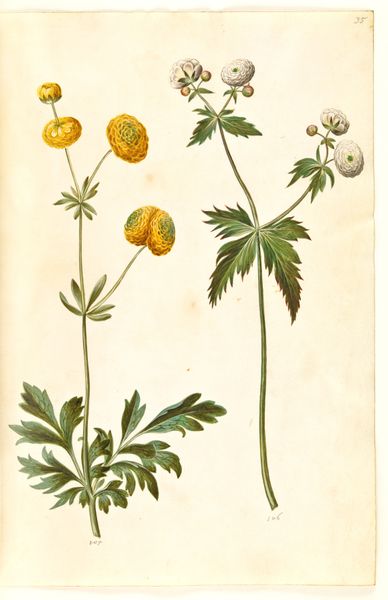
drawing, coloured-pencil, gouache
#
drawing
#
coloured-pencil
#
baroque
#
gouache
#
coloured pencil
Dimensions: 505 mm (height) x 385 mm (width) (bladmaal)
Editor: So this beautiful rendering of Eryngium planum, or blue sea holly, created between 1649 and 1659 by Hans Simon Holtzbecker, really struck me with its delicate colour palette and scientific accuracy. It feels very meticulous. What aspects of this piece draw your attention? Curator: What immediately stands out is how these botanical illustrations were crucial to the development of scientific understanding and botanical knowledge at the time. Holtzbecker, as a court painter, was contributing to a larger movement driven by wealthy patrons interested in natural history. Consider who these images were made for. Who had access to them, and what kind of power did that bestow? Editor: That's a really good point! I was so focused on the aesthetics that I missed the socio-political implications of botanical art as a status symbol, especially back then. So, it wasn’t just about pure science? Curator: Precisely. While serving a scientific purpose, these works reinforced social hierarchies and illustrated the power dynamics embedded in exploration, colonialism, and access to knowledge. The rarity of this ‘exotic’ species of Eryngium in Northern Europe added value to it. Does that change how you see the image now? Editor: It definitely does! It shifts it from a lovely, precise rendering of a plant to a symbol of privilege and control. Like owning the rights to display, document, and study a piece of nature. Wow, I learned something important today! Curator: Me too! Examining the social contexts gives it depth and reminds us that art is not created in a vacuum. Next time you see a seemingly straightforward nature rendering, I invite you to reflect upon the dynamics of wealth and representation it signifies!
Comments
No comments
Be the first to comment and join the conversation on the ultimate creative platform.
